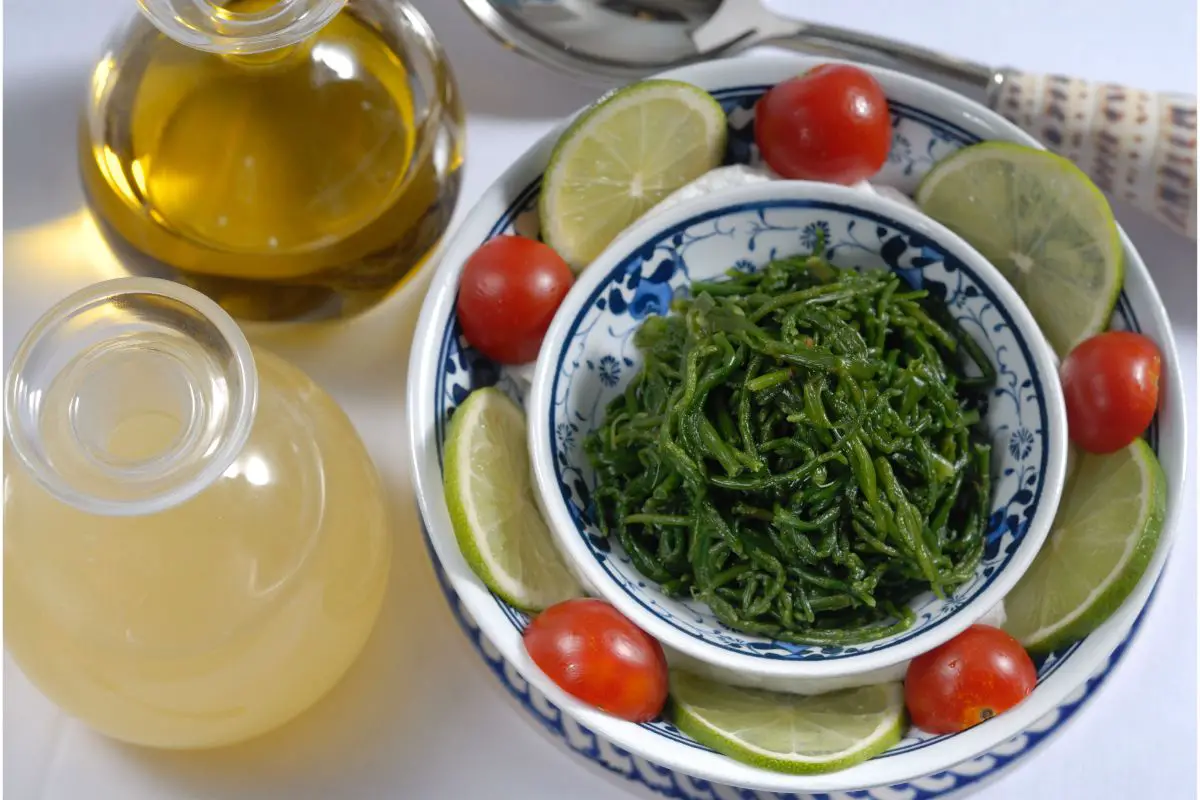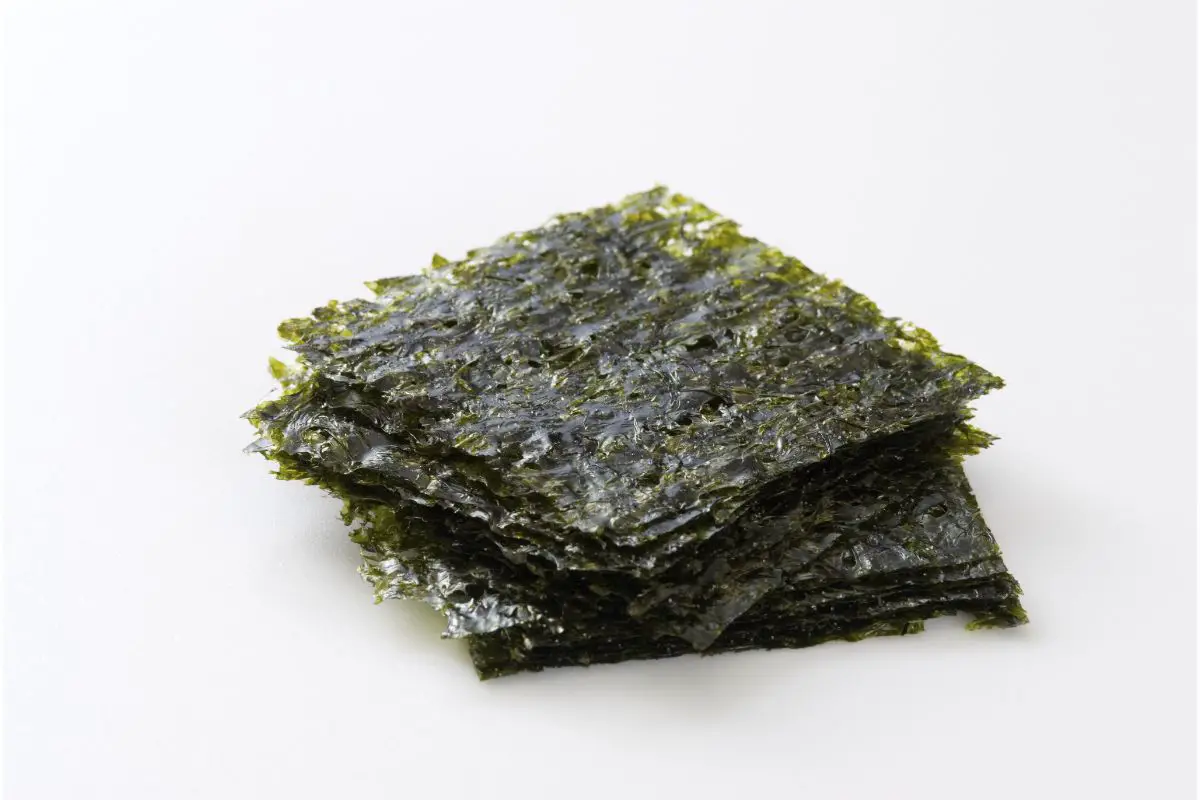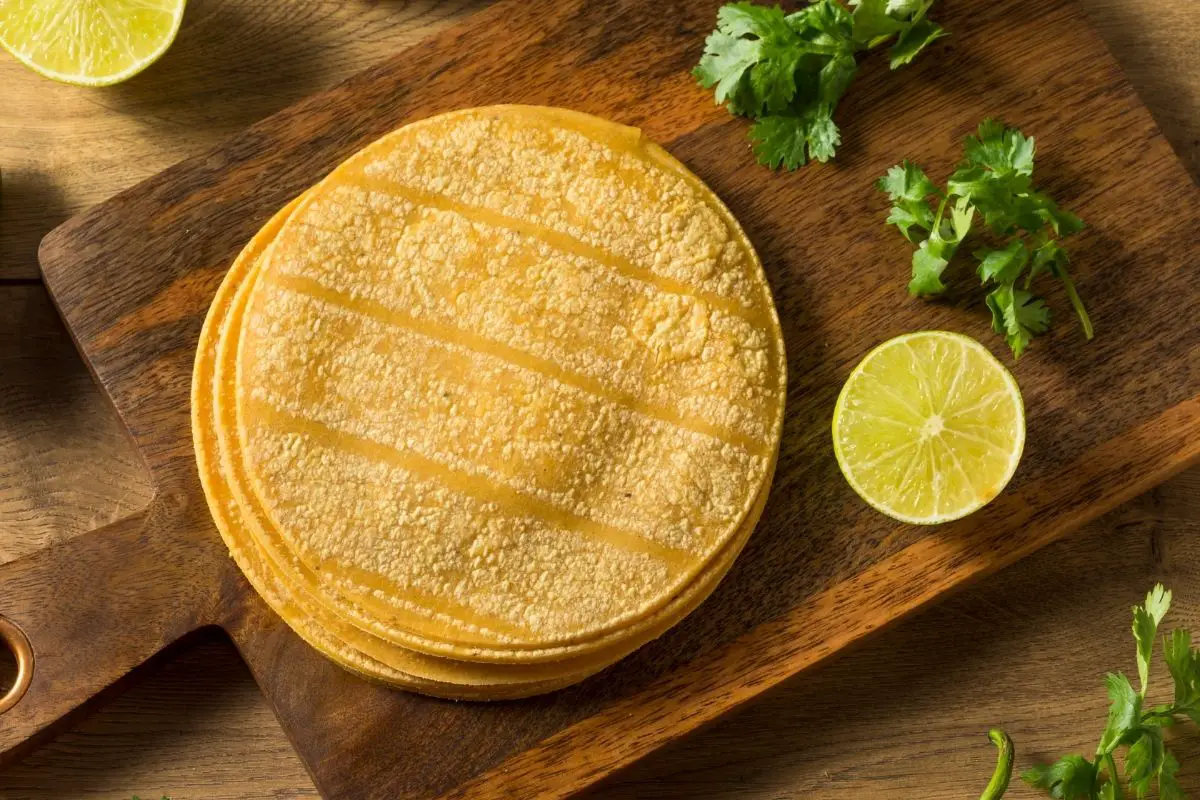If you’ve ever delved into the world of popular weight loss supplements and superfoods, you probably would have seen a substance called sea moss crop up now and again.
Also known as Irish Moss, sea moss is a superfood that has grown in popularity after notable celebrities gave it their approval.

Sea moss may have several health benefits, like improving the immune system, or supporting overall heart health. You can receive some of these benefits by consuming sea moss, as it can be eaten raw or blended into meals and drinks.
If you’re thinking about trying sea moss and wondering what it might taste like, keep reading. You’ll learn more about what sea moss is from this post, including how it tastes, and how you can include it in your diet to reap its health benefits.
About Sea Moss
Sea moss is an algae variety that is produced between Europe and North America, on the Atlantic coast.
The algae is edible and comes in lots of different shades, including yellow, red, green, and purple. Sea moss is full of nutrients and is regularly harvested to reap its several health benefits.
How Does Sea Moss Taste?
Sea moss doesn’t have a strong flavor. It’s barely noticeable, particularly when it’s blended into smoothies, juices, and soups. Sea moss can vary in consistency, being soft, crisp, or crunchy, based on the way it’s prepared.
Raw sea moss has an earth-like flavor, which resembles notes within clams, seaweed, and oysters. If you eat raw sea moss and end up not liking the way it tastes, you can add sea moss to different drinks and food to mask its flavor.
Sea Moss Health Benefits
Here are some of sea moss’ potential health benefits.
Better Gut Health
Sea moss contains prebiotic mucilage. This is a fiber that delivers important gut microbes to food, which could support proper gut health.
For example, a study looked at sea moss’ prebiotic properties in rats. The results were that sea moss had a beneficial effect on gut microbes, immunity, and gut health.
However, more human studies are required before we can confirm whether sea moss has the same response in humans.
Better Immunity
Sea moss has several features which may aid the immune system.
The carrageenans within sea moss may have anti-tumor effects, while red seaweed’s antifungal and antibacterial properties may improve immunity.
Mucilage also has a gelatinous feel which may ease mucus membranes, helping them catch and eliminate germs from our system.
Aid Weight Loss
Sea moss may aid weight loss due to its fiber content. Fiber can help you feel full for longer, making you less likely to overeat later in the day.
However, even though fiber is naturally filling, no studies have looked into sea moss’ satiating effects.
Support Heart Health
Consuming seaweed may help lower your risk of cardiovascular disease, due to the algae’s antioxidants and abundant nutrients.
However, the research behind this looked at seaweed in general, instead of sea moss in particular.
Reduced Cancer Risk
Research has found that sea moss may have potential anti-tumor effects. Some of its elements were extracted via ultrasound and were seen to prevent human cancer cell lines from growing in a lab.
This may be thanks to the many antioxidants and carrageenan within the moss. However, more human studies are required to confirm whether sea moss is a viable cancer prevention treatment.
Better Skin
Sea moss is also becoming more popular with certain skincare items, but there hasn’t been a lot of research that examines its effects.
Sea moss’ antioxidants and nutrients may aid the skin, as well as its sulfur content. Sulfur is known to aid yeast and fungal skin infections and is also an effective anti-acne treatment.
Sea moss also contains amino acids. These, like arginine, may improve skin condition by encouraging dead skin cell renewal.

Sea Moss Drawbacks
Sea moss is fine to consume in moderation, but it’s important to avoid eating too much of it.
Sea moss contains iodine. Iodine is important for regulating hormones, but an excess of iodine can harm the thyroid and lead to unbalanced hormones.
Eating too much sea moss can also increase your intake of heavy metals, like arsenic and mercury.
There isn’t a recommended daily intake of sea moss, but the results of one study indicated that two tablespoons per day did not lead to negative side effects.
Ways Of Eating Sea Moss
Sea moss can be added to many different dishes, allowing you to reap the benefits without noticing its unique flavor.
Here are some examples of foods to add sea moss to:
- Smoothies
- Soups
- Salads
- Casseroles
- Sauces
Sea moss usually comes in two main types that make it easier to add to different dishes. These are sea moss gel and sea moss powder.
Sea Moss Gel
Sea moss gel is the most common method of eating sea moss. As the gel is made from unprocessed seaweed, it’s low in calories and retains its original beneficial nutrients.
Sea moss gel has a mucilaginous texture which makes it a great thickening agent. You can use it to add bulk to runny stews, drinks, and soups.
Flavor-wise, regular sea moss gel is tasteless. However, some manufacturers add flavorings to their gel to make it more appealing. Examples include raspberry, mango, and elderberry.
Some brands even make sea moss gummies which makes it even easier to reap its benefits.
Sea Moss Powder
Sea moss powder is another easy way to add it to your meals. You can make the powder yourself by grinding dried sea moss, but you can find it at several health food stores and online.
Sea moss powder is ideal for adding to sauces, soups, and smoothies.
How To Make Sea Moss Gel
Though sea moss gel is available from several manufacturers, if you prefer, you can make your own at home!
Make sure that your sea moss is real before you follow the steps. There are lots of fake sea moss products on the market, which have been processed with salt and chemical pools.
Fake sea moss often looks dry with white powder coating it. Real sea moss may have sand, shell, and tiny rock debris on it, but it shouldn’t contain any salt or white powder.
After you’ve sourced real sea moss, follow these steps to make sea moss gel!
- Rinse the sea moss well to remove any dirt or debris.
- Immerse the moss in spring water between four to twelve hours. Squeeze some fresh lime juice in the solution to lessen the ocean smell.
- Take the soaked sea moss out of the water and transfer it to a blender.
- Pour fresh spring water into the blender. Remember that more water results in a runnier gel, while less water leads to a thicker one.
- Blend the moss on a high setting for two to four minutes.
- Transfer the gel into an airtight glass container. Keep the gel in the fridge and finish within two weeks.
The Bottom Line
Now you know more about sea moss and how it tastes!
Raw sea moss has a light, earthy flavor, but if you’re not a fan, you can mask its taste by adding it to your meals.
Both its powder and gel forms are easy to add to food and drinks, allowing you to receive its potential health benefits. Iodine and heavy metals may be present in sea moss, so it’s important to only consume in moderation.
If you’re worried about eating too much, add your sea moss gel to a face mask and use it for skin purposes instead!
Sea Moss: How Does It Taste?
Course: Taste Like4
servings30
minutes40
minutes300
kcalIngredients
Sea Moss
Directions
- Rinse the sea moss well to remove any dirt or debris.
- Immerse the moss in spring water between four to twelve hours. Squeeze some fresh lime juice in the solution to lessen the ocean smell.
- Take the soaked sea moss out of the water and transfer it to a blender.
- Take the soaked sea moss out of the water and transfer it to a blender.
- Blend the moss on a high setting for two to four minutes.
- Transfer the gel into an airtight glass container. Keep the gel in the fridge and finish within two weeks.
Recipe Video
https://www.youtube.com/watch?v=-gTnSiQhvo8Video can’t be loaded because JavaScript is disabled: FAQs–How does sea moss taste? (https://www.youtube.com/watch?v=-gTnSiQhvo8)- Author <li class="abh_posts">Recent Posts
- What Exactly Do Chickpeas Taste Like? Is There A Distinct Flavor? - September 30, 2023
- Top 11 Low Carb Options at Sonic Drive-In for Keto Diet - September 30, 2023
- What Should You Serve Alongside Potato Salad? 8 Incredible Side Dishes - September 30, 2023











